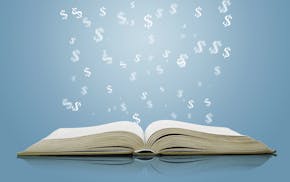I don't worry much about identity theft. I shred my documents, protect my Social Security number and am careful with sensitive information online.
Then I read about a fraud ring right here in Minnesota that allegedly used corrupt bank employees to help steal identities, open new loans and drain bank accounts to the tune of at least $10 million. Eleven financial institutions including TCF Bank, U.S. Bank and Wells Fargo reportedly were hit.
I couldn't help but wonder: If big banks can't stop the scammers, what can I do to protect myself from an inside job? Most ID theft experts say it's nearly impossible to protect yourself from major data breaches that target banks and retailers. These are the biggest threat for consumers, according to Doug Johnson, vice president of risk management policy at the American Bankers Association, because thieves would rather walk away with thousands of identities in a single attack than go after Joe Blow's bank account.
Because these data breaches are out of consumers' control, detection is key. That's why the security experts I spoke with monitor their accounts online several times per week, if not every day. Banking online is generally safe so long as you take precautions such as making sure your anti-virus software and spyware are up to date, typing in your bank's Web address instead of getting there through links, and being smart about your passwords.
Stay away from pet's names, mother's maiden name, the year you graduated from high school and other personal identifiers that may be found on social networking sites or other online databases. Fred Laing, president of the Upper Midwest Automated Clearing House Association, an electronic payments membership group, shoots for eight to 10- character passwords that include numbers and a special character, and uses different passwords for different financial accounts.
"Make it a little harder to get into your system than the next guy. You don't want yours to be the low-hanging fruit," he explained.
The extremely concerned consumer could buy another computer only for banking transactions.
"No surfing, no e-mailing, no photos, no online shopping -- just banking," said John McCullough, former civilian director of the Minnesota Financial Crimes Task Force.
Unplug it from the Internet and turn it off when not in use.
Many banks also allow customers to set up account alerts of various sorts -- from text messages when account balances get low to notifications when balance transfers go through. These are helpful if a crook has access to an account you know of, but not if your identity has been used to open accounts at other financial institutions, said Johnson.
That's where credit reports come in handy because they display every account in your name -- every credit card, auto loan, mortgage and bank account. Consumers can request a free credit report from each of the three major credit bureaus annually at www.annualcreditreport.com or by calling 1-877-322-8228. If you stagger your requests for your credit report every four months, you've just created a free, do-it-yourself identity theft monitoring service.
Of course, there are companies out there that will gladly take anywhere from a few bucks a month to a few hundred dollars per year to watch your back. Be careful if you outsource this task. Research from the Consumer Federation of America found that many services don't always offer the protection that consumers expect.
If you're very worried, or have reason to believe you are at high risk, consider a credit freeze, which prevents lenders from opening new accounts unless you request a "thaw." It costs $5 per lock per credit bureau, or $15. It costs the same to unlock it.
Before you mark a day on the calendar to buy a new computer and freeze your credit, let's gain some perspective. Anyone who has ever experienced identity theft can tell you that it's a pain to clear up, consuming an average of 33 hours, according to the latest Identity Fraud Survey Report by Javelin Strategy and Research. But it's not rampant; it struck 3.5 percent of the U.S. population in 2010, down from 4.8 percent the year before.
Many victims are completely reimbursed for their monetary losses by their financial institutions. By law, consumers can't be on the hook for more than $50 per card when unauthorized charges are made and reported within a reasonable amount of time.
Kara McGuire • 612-673-7293 or kmcguire@startribune.com. Follow her on Twitter: @kablog
To learn how an FBI agent protects his identity, visit Kara's blog: www.startribune.com/mcguire.


